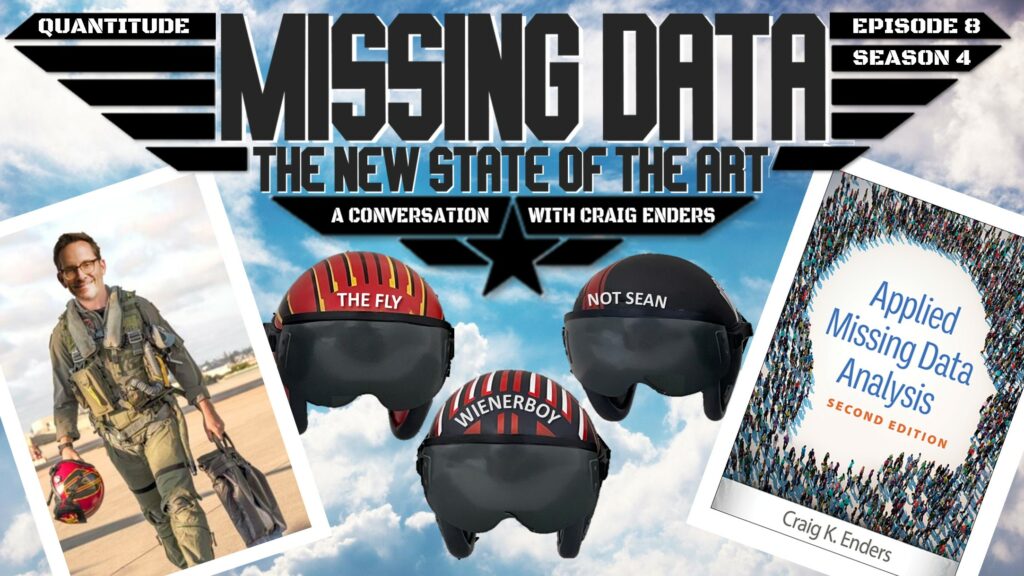In this week’s episode Greg and Patrick get to explore modern methods for missing data analysis while belaboring quotes from Top Gun with their guest Craig Enders from the University of California at Los Angeles. Craig looks back over the past 20 years of developments in missing data analysis to discuss what has worked, what hasn’t worked, and what new methods are available now that we didn’t have back then. Along the way they also discuss Sean, Not Sean, going to the movies, grumpy old man mode, wiener boy, grave digger, Venice beach zoom backgrounds, Lie Awake, hung over GREs, Greg’s grandmother, shiny objects, Motorola flip phones, Ask Jeeves, talking narwhals, mimeographs, unscrewing yourself, and who can be whose wingman.
Lightly Edited Transcript
We provide a lightly-edited and obviously imperfect audio transcript of the episode available here. This is not an exact representation of the audio, but does provide a searchable document with identified speakers and associated time stamps.
Related Episodes
S1E17: Planned Missing Designs (or, How to Beat a Metaphor to Death)
S1E16: IF EPISODE=16 THEN EPISODE=-999;
S4E02: Underachievers, Overachievers, & Maximum Likelihood Estimation
Suggested Readings
Allison, P. D. (2000). Multiple imputation for missing data: A cautionary tale. Sociological Methods and Research, 28, 301–309
Anderson, T. W. (1957). Maximum likelihood estimates for the multivariate normal distribution when some observations are missing. Journal of the American Statistical Association, 52, 200–203.
Baraldi, A. N., & Enders, C. K. (2010). An introduction to modern missing data analyses. Journal of school psychology, 48, 5-37.
Collins, L. M., Schafer, J. L., & Kam, C. M. (2001). A comparison of inclusive and restrictive strategies in modern missing-data procedures. Psychological Methods, 6, 330–351.
Enders, C. K. (2022). Applied missing data analysis: Second Edition. Guilford Publications.
Enders, C. K. (2013). Dealing with missing data in developmental research. Child Development Perspectives, 7, 27-31.
Enders, C. K. (2017). Multiple imputation as a flexible tool for missing data handling in clinical research. Behaviour Research and Therapy, 98, 4-18.
Enders, C. K. (2001). A primer on maximum likelihood algorithms available for use with missing data. Structural Equation Modeling, 8, 128-141.
Enders, C. K. (2001). The impact of nonnormality on full information maximum-likelihood estimation for structural equation models with missing data. Psychological Methods, 6, 352-370.
Rubin, D. B. (1976). Inference and missing data. Biometrika, 63, 581–592.
Schafer, J. L., & Graham, J. W. (2002). Missing data: our view of the state of the art. Psychological Methods, 7, 147-177.

